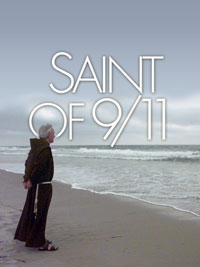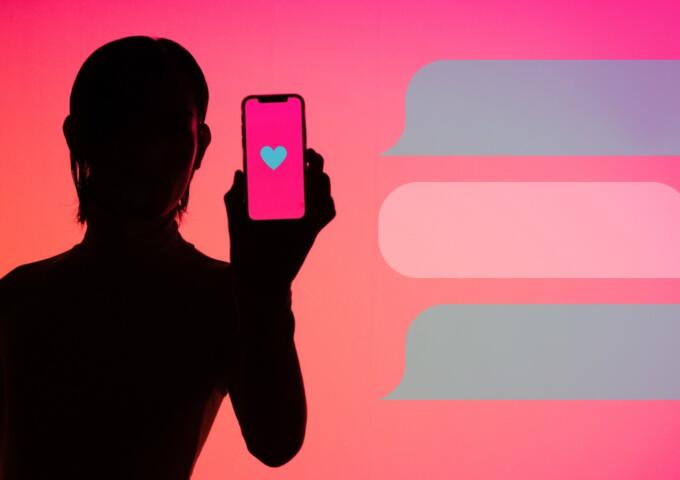
return to the Equality Forum 2006 Supplement index
If you know about Father Mychal Judge at all, chances are it’s because of the last picture ever taken of him. Employed as the chaplain of the New York City Fire Department since 1992, the Roman Catholic priest was among the first on the scene at Ground Zero on Sept. 11. While helping out and delivering last rites, he became the day’s first recorded casualty, his body bag labeled, “VICTIM 0001.”
First struck on the head by falling debris-after removing his fire helmet-he was then killed during the fall of the north tower. (Like much of what happened that day, the details are fuzzy, though some reports have him being struck by a falling jumper.)
The image of four firefighters and a policeman carrying Judge’s lifeless body, snapped by Reuters photographer Shannon Stapleton, became one of the most famous photos to emerge from the attacks. The pose, with his head tilted to the right, even caused people to dub it an American Piet�.
And yet that doesn’t quite explain why Judge’s funeral attracted more than 3,000 people. Or why a campaign is in motion to elevate him to sainthood. Or, for that matter, why there’s a feature-length documentary on his life-namely, Glenn Holsten’s Saint of 9/11, screening as part of this year’s Equality Forum.
Saint debuted last month as part of the Tribeca Film Festival, alongside the other Sept. 11-themed film of the moment United 93. (The fest itself was curated in response to the attacks.) Alongside the studio-funded Paul Greengrass-helmed United, Saint represents a long overdue move to take back the events from those who’ve exploited and co-opted them. But Saint, which is essentially a 90-minute memorial, also has a little bit of record-straightening on its agenda.
For example, the film complicates the perception of Judge as an out homosexual-albeit a celibate one. While only those close to him knew of his sexual orientation (including fire commissioner Tom Van Essen), Judge never tried to deny it, and never tried to hide his affiliation with such groups as Dignity, a coalition of out Catholics.
Just 10 days after Sept. 11 columnist Andrew Sullivan mentioned Judge’s orientation directly in his article “Why We Should Support This War.” “He is not a gay hero,” Sullivan wrote. “He is an American hero who was also gay.”
Yet Judge was also skilled at keeping his orientation under the radar-so much so that Pope John Paul II unwittingly accepted the priest’s firefighter helmet in memory of the attacks.
The subject of Judge’s orientation was raised again upon the naming of antigay Cardinal Joseph Ratzinger as John Paul’s successor, and invoked once more last September, when it was reported that the Vatican was likely to bar gay men, even celibate ones, from the priesthood. After this announcement, Sullivan posted on his blog the famous photo of Judge with a caption reading, “Unfit for the Priesthood.”
The loving and not cripplingly hagiographic Saint of 9/11, which employs Ian McKellen to read its subject’s diary entries, seeks to make a strong case for Judge as the greatest human being of our era. It doesn’t have to try hard.
Just as his funeral, held at Manhattan’s vast St. Francis of Assisi Church, drew such a crowd that many had to stand outside (those who got in include the Clintons and Rudy Giuliani, who dubbed him a saint), so too is Saint packed with a never-ending procession of talking heads, albeit wisely limited to those closest to him.
As is repeatedly proven, his work on 9/11 was only his final good deed in a life teeming with them. The son of Irish parents, the Brooklyn-born Judge-ne Robert Emmett Judge-was precocious. As a 6-year-old he bore the pain of watching his father die a slow death. By 15 he was already beginning the formation process to enter the Franciscan community, and he became an ordained priest by 28.
If the line often attributed to him that he wanted to die saving someone was accurate, then Judge acted as though he was always on the verge of death. He was constantly there for those affected by homelessness or Ireland’s Troubles.
While his name will always be synonymous with 9/11, his greatest work might be what he did during the early days of the AIDS crisis. The Vatican infamously issued a letter essentially disowning homosexual Catholics in 1986-at the height of the AIDS epidemic.
While Judge’s superiors denied comfort to those afflicted, he gave them nothing but. When Dignity was expelled from its home at St. Francis Xavier Church, Judge provided the organization with an alternative. Interviewees recount that when it came to speaking to parents of recently outed children, Judge, unlike those who leaned on the “don’t blame yourself” line, told them to be proud of their kids.
To non-Catholics-as well as non-Christians and the nonreligious-Judge seems precisely the kind of model priest the Church would want to associate itself with. As Andrew Sullivan told The New York Times, “The idea that gay priests somehow cannot serve straight congregants, when you have this priest working with one of the most stereotypically macho organizations-and he gave his life to them-captures some of the cruelty and bigotry we see in the Vatican now.”
Saint of 9/11
Fri., May 5, 8pm. $5-$10. Gershman Y, 401 S. Broad St.
Panel discussion: Sat., May 6, 4:30pm. Free. Prince Music Theater, 1412 Chestnut St. 215.732.3378. www.equalityforum.org




